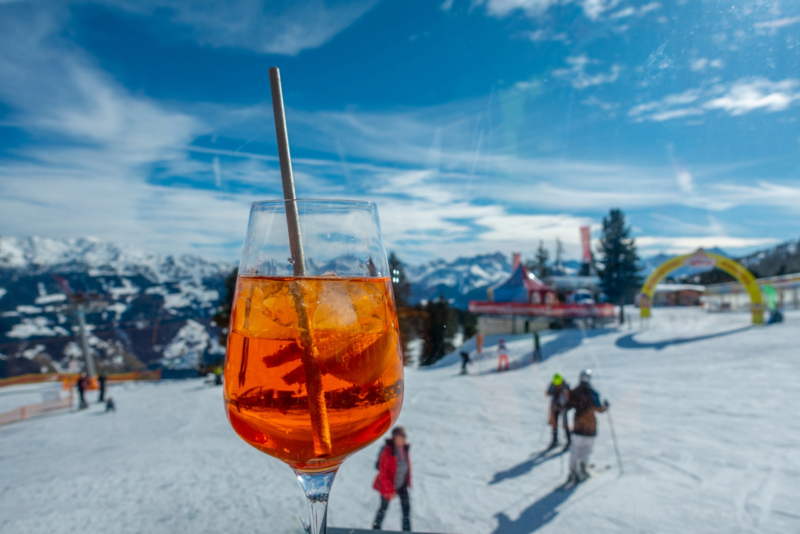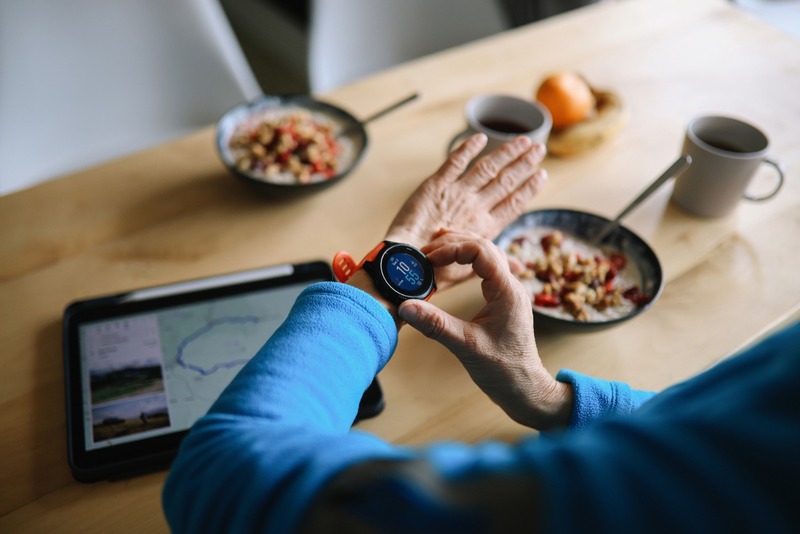News
Leg Conditioning For Downhill Sports

Downhill sports such as running and skiing puts a heavy load on your legs, including higher chances of muscle damage and other injuries. Careful and specific preparation is a must for any one attempting a sport with a considerable downhill component. On descent, your body wants to protect itself against gravitational pull, so it tends to hesitate or brake. Conditioning your large muscle groups helps to manage that hesitation so you’re still moving fluidly and efficiently, but not at a pace where you’re out of control.
Howard Head Sports Medicine’s physical therapist Lauren Rust offers strengthening exercises to prepare for downhill activity. “Leg strength is vital when developing a downhill conditioning program. It is important to remember overall condition level, balance and core stability.”
SQUATS
Squats and squat variations may be one of the most important exercises when prepping for downhill sports. Your quadriceps (front of your thighs) are one of the main muscle groups used. The squat also works your gluteals and core.
- Stand with your feet hip width apart. Sit your bottom back so that you keep your heels on the ground and your knees behind your toes. Keep your core engaged throughout the motion. Once the body weight squat has been mastered, you can add weight through dumbbells/ barbell on your chest to perform front squats
- Perform 3 sets of 10-15 repetitions; 2-3x/week
- This can also be progressed to body weight squat jumps. With these, it is important to absorb the landing with bent knees and hips. This plyometric exercises will absorb the terrain when running or skiing by building speed and power. Being able to absorb the terrain with your muscles will prevent back and joint pain.
- Perform 3-5 reps of 3-4 sets; 1x/week
- Perform 3-5 reps of 3-4 sets; 1x/week
- Single leg squats are also an important variation to the double leg squat. This exercise works your single leg balance, hip stability and strengthens the quad. When performing the single leg squat, focus on keeping your pelvis level and slowly lowering down. Keep your knee tracking over your toes, do not let your knee dive inward.
- Perform 3 sets of 10-15 repetitions; 2-3x/week
LADDER AGILITY DRILLS
Ladder drills to improve your agility, endurance, coordination and cardiovascular fitness.
- Place a ladder or make one out of tape, it should be around 15 feet x 20 inches with 12 rungs. Make sure it is on a surface with good traction.
- Start slow to become comfortable with the pattern and then speed up
- Start with a side to side shuffle. The ladder will be vertically out in front of you and to the right side of the first square. Step your left foot into the first square, followed by your right foot. Then step your left foot outside/to the left of the square. Begin the next rep by stepping into the second square with your right foot followed by your left foot. Continue the three-step pattern in and out of the squares. There are a variety of other single leg and double leg drills.
- Repeat 4-6x with 30 seconds rest between sessions. 1-2x/week
BALANCE EXERCISES
Balance exercises under a variety of conditions are important for core and general lower extremity stability.
- Make sure that you perform balance exercises in a safe area.
- Start with standing on one leg with your eyes open. Try to keep your hips level.
- The goal is 30 seconds on each leg. When this is comfortable, close your eyes.
- This can also be progressed by slowly turning your head with your eyes open or moving to a foam pad or bosu ball.
More News
-
New!
More

First Chair to Last Call: What Does Alcohol Really Mean For Your Health?
In nearly every Colorado ski town, some iteration of the neon sign blares its play-hard-party-harder anthem. It’s a not-so-subtle nod to mountain party culture, a lifestyle that normalizes combining sports and outdoor adventures with heavy drinking and partying. In Eagle County, après culture, high-altitude living and outdoor performance have coexisted for as long as locals have been sliding on snow. But how much is too much at altitude? And what role do social support systems play in helping residents find balance?
-
New!
More

Counting More Than Steps: How Wearables Can Help (or Hinder) Your Health
From step counts to sleep stages, heart rate variability to blood sugar spikes, wearable devices are giving us a front-row seat to what’s happening inside our bodies. Strapped to wrists, slipped onto fingers or wrapped around our biceps, wearables like the Oura Ring or Whoop strap promise insight and advice in the quest for better health.
-
More

Cass Barham and Sarah Crabtree Honored As Recipients of Vail Health Elevate Award
Cass Barham and Sarah Crabtree, both lab techs at Vail Health Hospital, have been named recipients of the Vail Health Elevate Award. Vail Health created the Elevate Award in June 2022 to give patients and their families an opportunity to nominate and thank employees who have touched their lives in some way.
